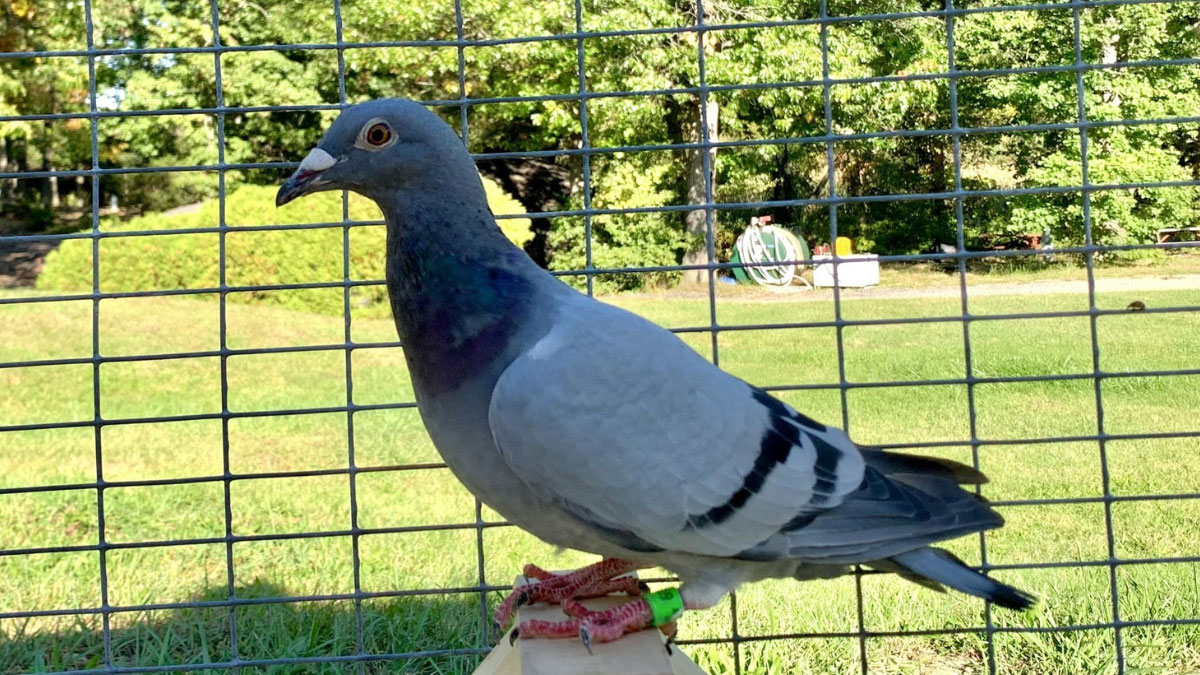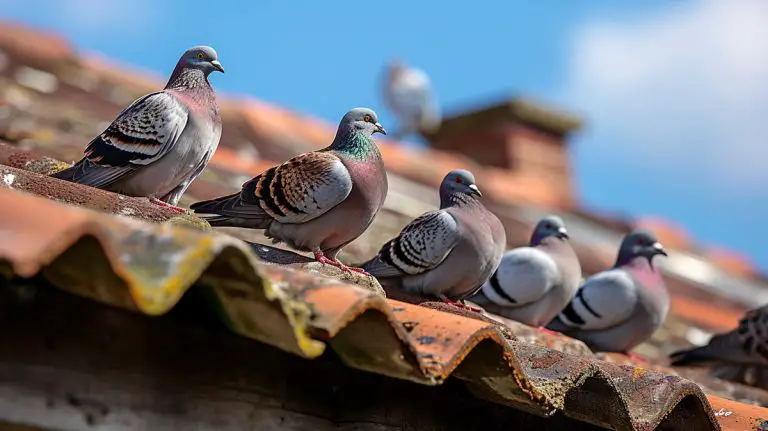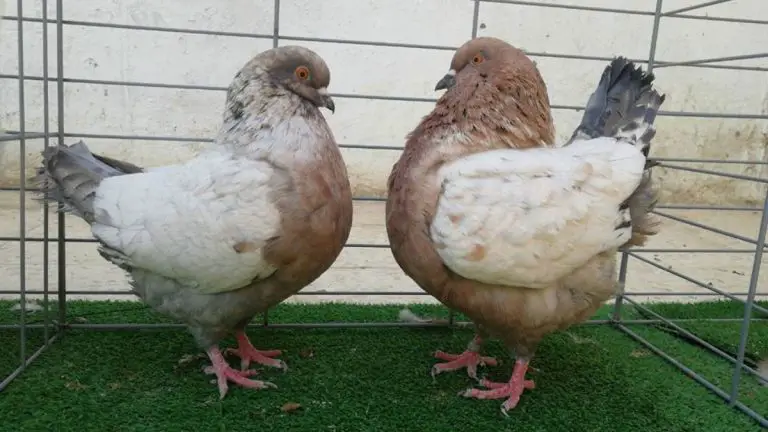How Do You Train a Racing Pigeon? Things to Ensure
Racing, flying, or homing pigeons can fly between 500 and 800 miles a day without resting. However, this varies depending on weather conditions and how well the birds are trained. So, it’s crucial to learn how to train a racing pigeon.
Well, coaching your homing pigeons involves developing their mental and physical capabilities. You could build their cognitive abilities through techniques like single and group tossing. And for their physical capacities, you could try methods like short tossing and loft flying.
So, what is the importance of proper coaching in developing your pigeons’ abilities? Keep on reading to find out.
Importance of Proper Training in Developing Racing Pigeon’s Abilities

Proper coaching of your racing pigeons is critical for various reasons. These include:
1. Enhances Their Mental & Physical Aspects
Proper schooling enhances your pigeons’ mental and physical aspects. Consequently, your birds can fly faster, longer, and more precisely when covering longer distances. So, you don’t have to worry about them dying from predation, exhaustion, collisions with power lines, or storms.
2. Promotes Better Navigation Skills
Proper coaching helps make your homing pigeons remarkable navigators by building their cognitive abilities. This means they can find their loft from nearly any location, whether the environments are familiar or unfamiliar.
3. Improves Overall Health
Tutoring your pigeons correctly can help promote their overall well-being and health. Simply, your birds will be less likely to get sick, allowing them to race for many years.
4. Ease of Responding To Signals
Coaching your homing pigeons properly enhances their way of recognizing and responding to the signals you give them. Consequently, this ensures a better connection between you and the birds.
5. Staying Focused
With proper coaching, you can rest assured that your birds will stay focused throughout the race when navigating different terrains.
Developing the Physical Abilities of Racing Pigeons
Below we will discuss the different techniques you can use to advance the physical abilities of your racing birds. Check them out.
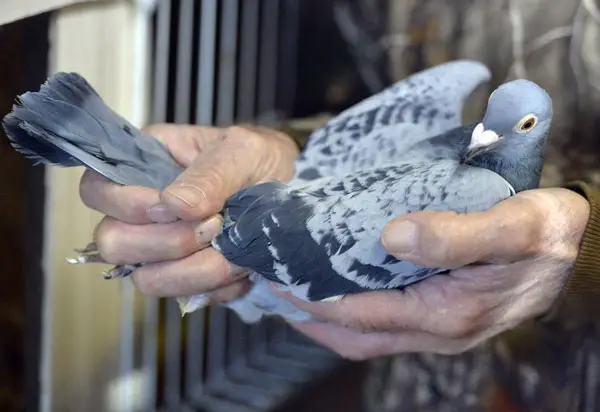
Loft Training
This technique involves teaching your pigeons how to fly back to their home, known as the loft. However, you must increase the distance the birds cover and their flight duration throughout the coaching. Consequently, this helps develop your bird’s endurance and stamina. It also helps improve their overall fitness.
Short Tosses
Short tosses are predominantly best suited for young birds. The birds must be transported a few miles away from their loft and released to fly back to their lofts. You can give them two to three tosses from 3 miles and increase the distance to 6 miles.
Typically, this coaching can be conducted several times weekly as you continue increasing their flying time and distance. The aim of these tosses is to help your pigeons gradually build up their endurance.
Watch this video of a pigeon fancier short tossing his birds:
Interval Training
Interval training is about interchanging the periods of high-intensity exercise with those of low-intensity or rest periods. You simply let your pigeons fly at high speeds for a few minutes, then rest.
Or you could let them fly at lower speeds. When done correctly, the coaching may help build your pigeons’ muscle strength, endurance, and overall physical fitness.
Proper Nutrition
Giving your pigeons a balanced diet promotes their overall physical aspects. Their diet must consist of carbohydrates and fat for increased energy levels to fuel their flights.
Also, the diet should be rich in protein for muscle development, calcium to strengthen the bones, and vitamins to enhance their immune function.
Developing the Mental Abilities of Racing Pigeons
Your flying pigeons may look good physically, but what is inside matters significantly during race day. So, below are tips on how to help your birds develop their mental abilities.
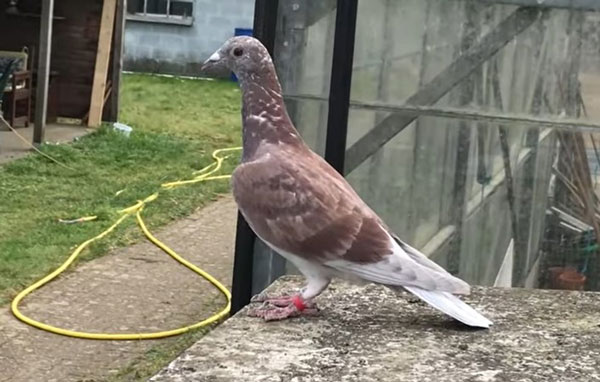
Long Tosses
Unlike a short toss, a long toss involves transporting your pigeons to a location farther away from their loft. This can be 50 to 100 miles or even more.
Flying over a longer distance and for a more significant period helps develop the bird’s mental resilience. Also, long tosses help your pigeons learn how to cope with all kinds of stressors when exposed to new environments.
Group Tossing
As the name suggests, this technique is all about tossing your birds as a group to prepare them for pigeon racing. You can divide the birds into two groups. Then, release each group at a time from the same or different locations.
And once the birds start performing well, you can divide the two groups into smaller groups of 3-5 birds. Smaller group tossing helps prepare the birds mentally for what to expect when flying as a group.
Single Tossing
Single tossing is when you release your pigeons away from their loft, one at a time. Unlike group tossing, single tosses force your pigeons to think independently, teaching them mental maturity. This ensures the birds don’t rely on other pigeons to reach their loft during the racing day.
However, it would help if you only did single tossing once the birds have been to the exact location at least 2 times with other birds. In this case, you release each pigeon approximately 10 minutes apart.
Road Training
With road coaching, you must gradually increase the distance of the tosses from 1, 3, 5, 10, 20, and 25 to 30 miles. You must repeat the drill at least three times at the exact location.
This technique aims to help your pigeons develop their mental ability to adapt to various changing conditions. It also helps them build the resilience required to cope with stressful situations.
Creating an Effective Training Regimen for Racing Pigeons
Let’s check out a few tips on developing a very effective training regimen for your flying pigeons.
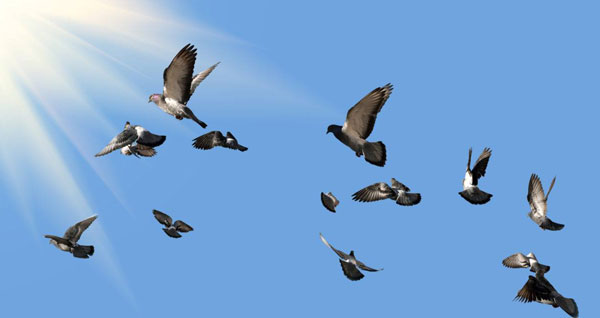
Tip #1: Provide your birds with a high-quality diet of proteins, carbohydrates, minerals, and vitamins to improve their physical health.
Tip #2: Ensure you have the right tools to track your bird’s progress, including speed clocks, training baskets, leg bands, and race markers.
Tip #3: Start coaching your pigeons for short flights and gradually increase the distance and duration to avoid injury.
Tip #4: Train your birds several times a week, allowing them to rest between the sessions so they don’t suffer from fatigue and other health issues.
Tip #5: During coaching, please stick to the same route and distance for some time to allow your pigeons to familiarize themselves with the road. Also, train your birds at the same time every day.
Tip #6: Monitor your pigeon’s performance, including the distance, speed, and behavior. This may help you pinpoint potential problems and correctly modify your bird’s exercise regimen.
Tip #7: Always keep in mind the weather condition. Avoid tutoring your pigeons when the temperature is extreme, and the winds are strong.
The Role of Training in the Success of Racing Pigeons
Good coaching may make or break the pigeons’ success during the race. So, below is the role coaching plays in the success of flying pigeons.

- Ease of recognizing their home loft
- Reduces the risk of injury
- Enhances the birds’ muscle strength, endurance, and stamina
- Allows ease of navigating through various obstacles
- Improves the bond between the owner and the birds
- Prepares the birds mentally on how to deal with distractions and stay focused.
- Ensures faster recovery times
When Should the Training for Racing Pigeons Start?
The best time to start teaching your pigeons to race is when they are around 6 weeks of age. At this time, the birds usually have the adequate physical and mental strength to handle loft training and short tosses. Therefore, you can begin by teaching them how to figure out the trapdoor in their loft.

However, apart from the age, you also must consider the time of the year to start the coaching. Generally, the best time to begin teaching your flying pigeons is in the spring or summer months. This is because the weather is usually milder during these two seasons.
If you’re interested in learning more about the process of banding young racing pigeons, you can check out our article on how to band a young racing pigeon. This article provides detailed information on the banding process and its importance in the racing pigeon community. Additionally, if you’re curious about the potential toxicity of pigeon poop, you can read our article on is pigeon poop toxic, which discusses the composition of pigeon droppings and their potential health implications.Conclusion
Coaching your flying pigeons consistently is essential to their success. So, it would be best if you stuck to a routine. However, the most important thing is adopting an effective coaching program. Such a program should help develop your birds’ mental and physical capabilities.
Besides improving their navigation skills, another importance of consistent and effective coaching is preventing injuries. It helps build trust and better communication between you and your pigeons.
